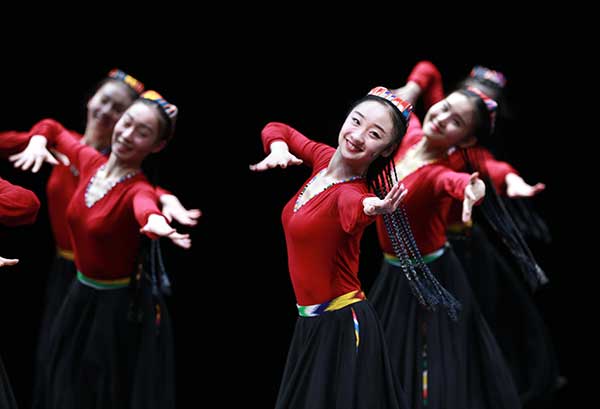 |
|
[Photo by Zou Hong/China Daily] |
"Students learn the moves without the history of each dance, which impedes the development of Xinjiang's dances," says Rejep. "Each dance was born because of a reason, such as worshiping ancestors, battling nature or imitating animals. We have clearly elaborated on this in the teaching materials."
Gao Du, a professor at the Beijing Dance Academy, says that the training guide for Xinjiang's ethnic and folk dances was first compiled in the 1970s, but it had not been updated until he invited Rejep to compile the new training materials.
"The new materials, which will be published in May, contain more than 400,000 words in two books as well as DVDs. It fills a gap in the promotion and development of the ethnic and folk dances of Xinjiang," says Gao.
For Rejep, completing work on the training material has always been his dream.
His father not only plays the gevav, a plucked Uygur instrument with a soft, mellifluous sound, but also the violin. He also teaches music. His mother is a teacher of Chinese. Rejep started singing and dancing in childhood.
He says that what he enjoyed most then was watching Meshrep, a folk tradition in Xinjiang, which saw people gathering in public outdoor spaces or indoors to sing, dance and tell stories.
"People would sit and watch at the start, but as the music got louder, they would stand up and dance," says Rejep. "I usually danced with the crowds. That's where I learned the most.
"Many of Xinjiang traditional art forms, like Meshrep, are facing competition from contemporary entertainment. It's a shame if this cultural heritage disappears from our lives."
Rejep's dance career started when he was enrolled to study at the Xinjiang Arts School in Urumqi at 9. There he learned not just Uygur dance, but also Chinese folk dance, contemporary dance and ballet.
|
|
|
|
|
|
|
|
